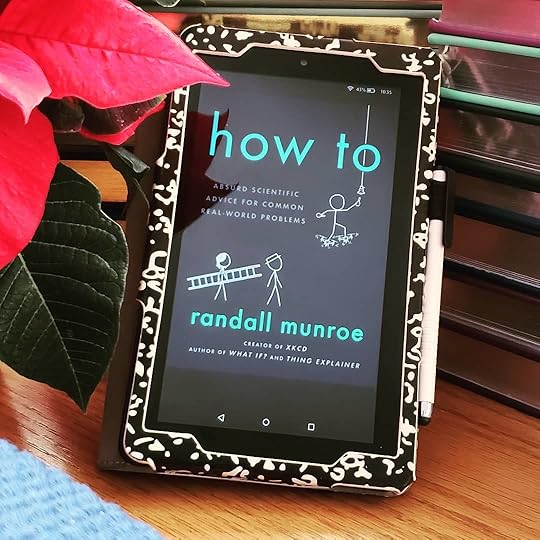What do you think?
Rate this book


308 pages, Hardcover
First published September 3, 2019
Then this is the book for you!
If you’re worried that the house will blow away, or that some prankster will attach jet engines and send it blasting off into the distance...
If you want to beat a high jumper, you have two options:Much like Munroe's first book - we learn how to do seemingly mundane things in (quite possible) the most complicated and convoluted way possible.
1. Dedicate your life to athletic training, from an early age, until you become the world's best high jumper.
2. Cheat.
Without shielding, spacecraft break up in the atmosphere. When large spacecraft enter the atmosphere without a heat shield, between 10 percent and 40 percent of their mass usually makes it to the surface, and the rest melts or evaporates. This is why heat shields are so popular.That's not to say I didn't enjoy it. I did have fun within these pages (I loved the tea-kettle-river segment!).




I really love that we can ask physics ridiculous questions like, “What kind of gas mileage would my house get on the highway?” and physics has to answer us.Most of the rest can be illuminated by his approach to most topics in this book. Tongue firmly planted in cheek and nerd flag raised proudly high. Frankly, I have no idea why it's taken this long for the creator of the brilliant xkcd comic to tell us the winning strategy in football (as Randall informs us, neither the FIFA or NFL rules say anything about the use of cavalry).

